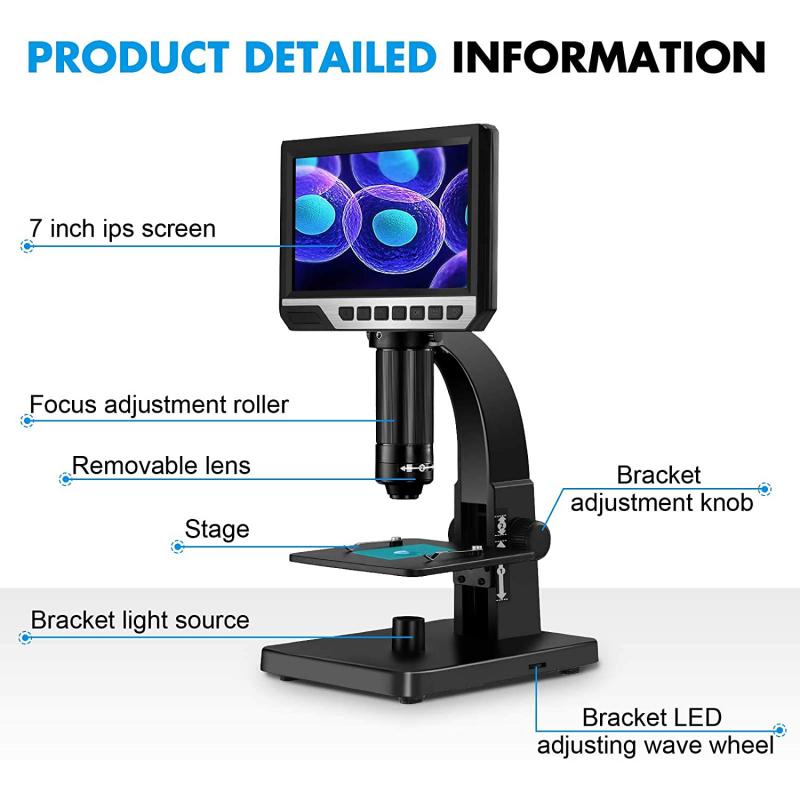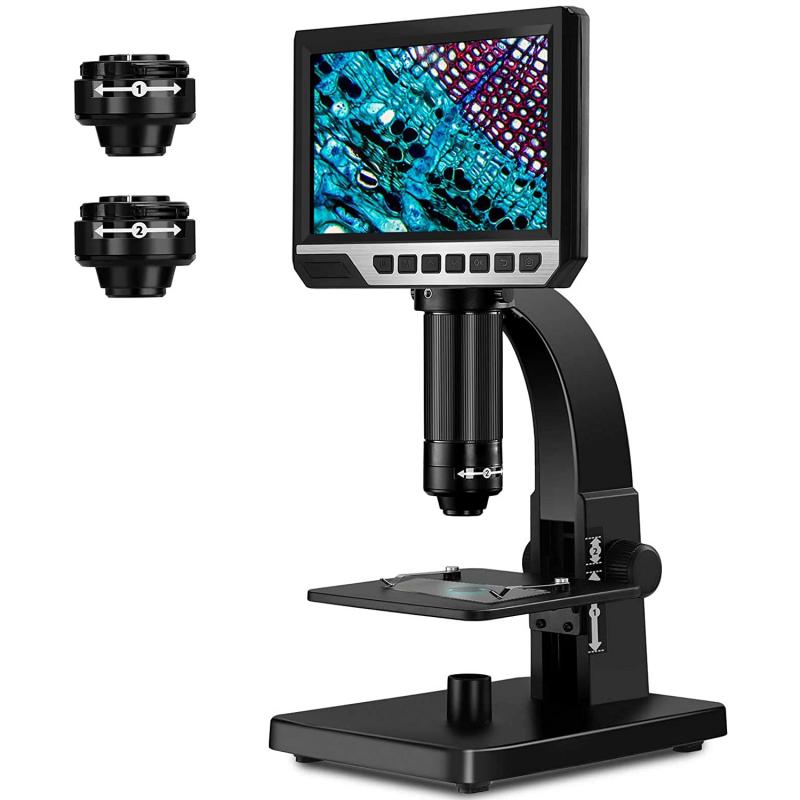What Is The Use Of Microscope ?
A microscope is an instrument used to magnify and observe small objects or organisms that are not visible to the naked eye. It is commonly used in scientific research, medical diagnosis, and education. Microscopes can be used to study the structure and function of cells, tissues, and microorganisms, as well as to identify and analyze microscopic particles and materials. They are also used in fields such as metallurgy, electronics, and materials science to examine the structure and properties of materials at the microscopic level. Microscopes come in various types, including light microscopes, electron microscopes, and scanning probe microscopes, each with its own specific applications and capabilities.
1、 Optical Microscopy
The use of microscope in optical microscopy is to magnify and visualize small objects or structures that are not visible to the naked eye. This technology has been used for centuries in various fields such as biology, medicine, materials science, and nanotechnology.
In biology and medicine, optical microscopy is used to study the structure and function of cells, tissues, and organs. It allows researchers to observe and analyze the behavior of living organisms, including the growth and development of cells, the movement of microorganisms, and the interactions between cells and their environment. This technology has also been used to diagnose diseases and disorders, such as cancer, by examining tissue samples under a microscope.
In materials science, optical microscopy is used to study the properties of materials at the micro and nanoscale. It allows researchers to observe the structure and behavior of materials, including their crystal structure, defects, and surface morphology. This technology has been used to develop new materials with specific properties, such as strength, conductivity, and optical properties.
In recent years, advances in optical microscopy have led to the development of new techniques such as super-resolution microscopy, which allows researchers to visualize structures at the nanoscale. This technology has opened up new avenues for research in fields such as neuroscience, where it has been used to study the structure and function of synapses and other subcellular structures.
In conclusion, the use of microscope in optical microscopy has revolutionized our understanding of the world around us. It has allowed us to visualize and study structures and processes that were once invisible, and has led to numerous advances in fields such as biology, medicine, materials science, and nanotechnology.

2、 Electron Microscopy
What is the use of microscope? Microscopes are essential tools in the field of science and medicine. They allow us to see objects that are too small to be seen with the naked eye. Microscopes are used in a variety of fields, including biology, chemistry, physics, and materials science.
One type of microscope that has revolutionized the field of microscopy is the electron microscope. Electron microscopy uses a beam of electrons to create an image of the specimen being studied. This type of microscope has a much higher resolution than traditional light microscopes, allowing scientists to see even smaller details.
Electron microscopy has many applications in science and medicine. In biology, electron microscopes are used to study the structure of cells and tissues. They can also be used to study viruses and bacteria, allowing scientists to better understand how these organisms function and how they can be treated.
In materials science, electron microscopes are used to study the structure of materials at the atomic level. This allows scientists to develop new materials with specific properties, such as strength or conductivity.
In recent years, electron microscopy has also been used to study the structure of proteins and other biomolecules. This has led to a better understanding of how these molecules function and has opened up new avenues for drug development.
Overall, electron microscopy is a powerful tool that has revolutionized the field of microscopy. Its high resolution and versatility have made it an essential tool in many areas of science and medicine.

3、 Scanning Probe Microscopy
Scanning Probe Microscopy (SPM) is a type of microscope that is used to study the surface of materials at the nanoscale level. It is a powerful tool that allows scientists to observe and manipulate individual atoms and molecules, making it an essential tool in the field of nanotechnology.
The primary use of SPM is to study the surface properties of materials, including their topography, chemical composition, and electronic structure. This information is critical for understanding the behavior of materials at the nanoscale level, which is essential for developing new materials and technologies.
One of the most significant advantages of SPM is its ability to provide high-resolution images of materials at the atomic scale. This level of detail allows scientists to study the behavior of individual atoms and molecules, which is essential for developing new materials and technologies.
In recent years, SPM has also been used to study biological systems, including proteins and DNA. This has led to new insights into the structure and function of these molecules, which could have significant implications for the development of new drugs and therapies.
Overall, SPM is a powerful tool that has revolutionized our understanding of materials and biological systems at the nanoscale level. As technology continues to advance, it is likely that SPM will continue to play a critical role in the development of new materials and technologies.

4、 Confocal Microscopy
Confocal microscopy is a type of advanced microscopy technique that is used to produce high-resolution images of biological samples. The technique uses a laser beam to scan the sample and create a 3D image of the sample's internal structure. Confocal microscopy is widely used in the field of biology and medicine to study the structure and function of cells and tissues.
The use of confocal microscopy has revolutionized the field of cell biology by allowing researchers to study the structure and function of cells in unprecedented detail. The technique has been used to study a wide range of biological processes, including cell division, protein localization, and gene expression. Confocal microscopy has also been used to study the development of embryos and the progression of diseases such as cancer.
One of the latest developments in confocal microscopy is the use of super-resolution techniques, which allow researchers to achieve even higher levels of resolution than was previously possible. These techniques have enabled researchers to study the structure and function of cells and tissues at the molecular level, providing new insights into the mechanisms that underlie biological processes.
In addition to its use in research, confocal microscopy is also used in clinical settings to diagnose and monitor diseases. For example, the technique can be used to study the progression of cancer and to monitor the effectiveness of cancer treatments.
Overall, confocal microscopy is a powerful tool that has revolutionized the field of cell biology and has the potential to provide new insights into the mechanisms that underlie biological processes. Its use in research and clinical settings is likely to continue to grow in the coming years as new techniques and applications are developed.






































